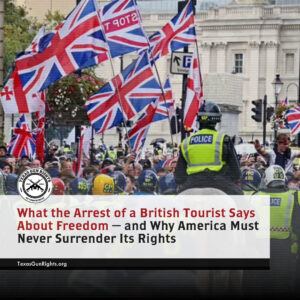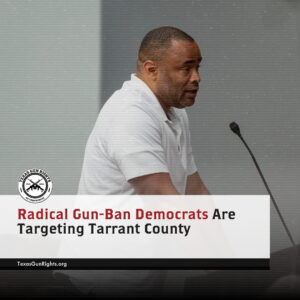Weatherford, TX — The latest wave of alarming statistics from anti-gun groups like Everytown for Gun Safety and Giffords may generate viral headlines, but closer inspection reveals familiar tactics: manipulated definitions, misleading classifications, and methodological sleights of hand designed to artificially inflate the threat of guns in civilian hands.
Take the recent claim, amplified across media platforms, that “1 in 15 Americans has been a victim of a mass shooting.”
The figure appears shocking — until one reads the fine print.
The study cited by Everytown defines a “victim” not as someone shot, injured, or even directly threatened, but as anyone who was in the “immediate vicinity,” saw the shooter, or simply heard gunfire.
By that standard, residents near a range, or in cities on the Fourth of July, could qualify as “victims.”
This loose definition dilutes the concept of what a mass shooting is.
A term once reserved for tragic events involving the death or injury of multiple people by an assailant has now ballooned into a catch-all for any discharged firearm heard within earshot of a passerby.
Even more concerning, their EveryShot database reportedly labeled a veteran suicide as having “eight victims.”
It’s an example of the same pattern: redefine the terms, inflate the count, publish the result, and drive fear-based policy.
Giffords, another advocacy group, has also leaned on creative definitions.
Their claim that someone is treated for a gun violence injury every 30 minutes folds in “negligent discharges” — incidents in which no one is targeted or intentionally harmed. While tragic, these are accidents, not acts of violence, and conflating the two distorts the data and public perception.
Nowhere is this manipulation more apparent than in the widely repeated assertion that the U.S. has had “57 times as many school shootings” as all other G7 countries combined.
That figure, regularly cited by activists like David Hogg, stems from the Gun Violence Archive’s criteria: any discharge of a firearm within 1,000 feet of a school — regardless of intent, timing, or injury.
One such “school shooting” involved an accidental discharge in a parking lot during summer break.
No students were present, and no one was harmed — yet it’s still counted in the total.
Activists also cite gun violence as the leading cause of death among “children,” but only by redefining “children” as those under 20 years old — and notably excluding infants, who more often die from disease.
Including 18- and 19-year-old males — a demographic statistically involved in gang-related activity — skews the numbers dramatically. Strip them out, and the rankings shift considerably.
When pressed on these definitions in congressional hearings, even ATF officials have struggled to defend the categorization.
Rep. Thomas Massie confronted former ATF Director Steven Dettelbach with the inclusion of 18- and 19-year-olds as “children,” despite the agency prosecuting those same individuals as adults under firearm law.
Data from states that have passed constitutional carry laws further contradict the narrative that deregulating carry leads to bloodshed.
After Ohio enacted constitutional carry, firearm-related deaths fell by 20%. Here in Texas, they dropped by 6% the year the law passed, and have declined further since.
Yet opponents, such as Rep. Jasmine Crockett, continue citing overall firearm death trends without disaggregating the data to show post-policy effects.
The Texas Tribune article she cited includes no data showing that permitless carry increased violence.
In fact, the accompanying chart showed no correlation.
Ultimately, gun control groups rely on volume, not validity. They count on the public seeing the headline, not the methodology.
As always, the key to public policy is not panic, but precision. Sound laws require sound data — and unfortunately, many of these claims collapse under even modest scrutiny.







